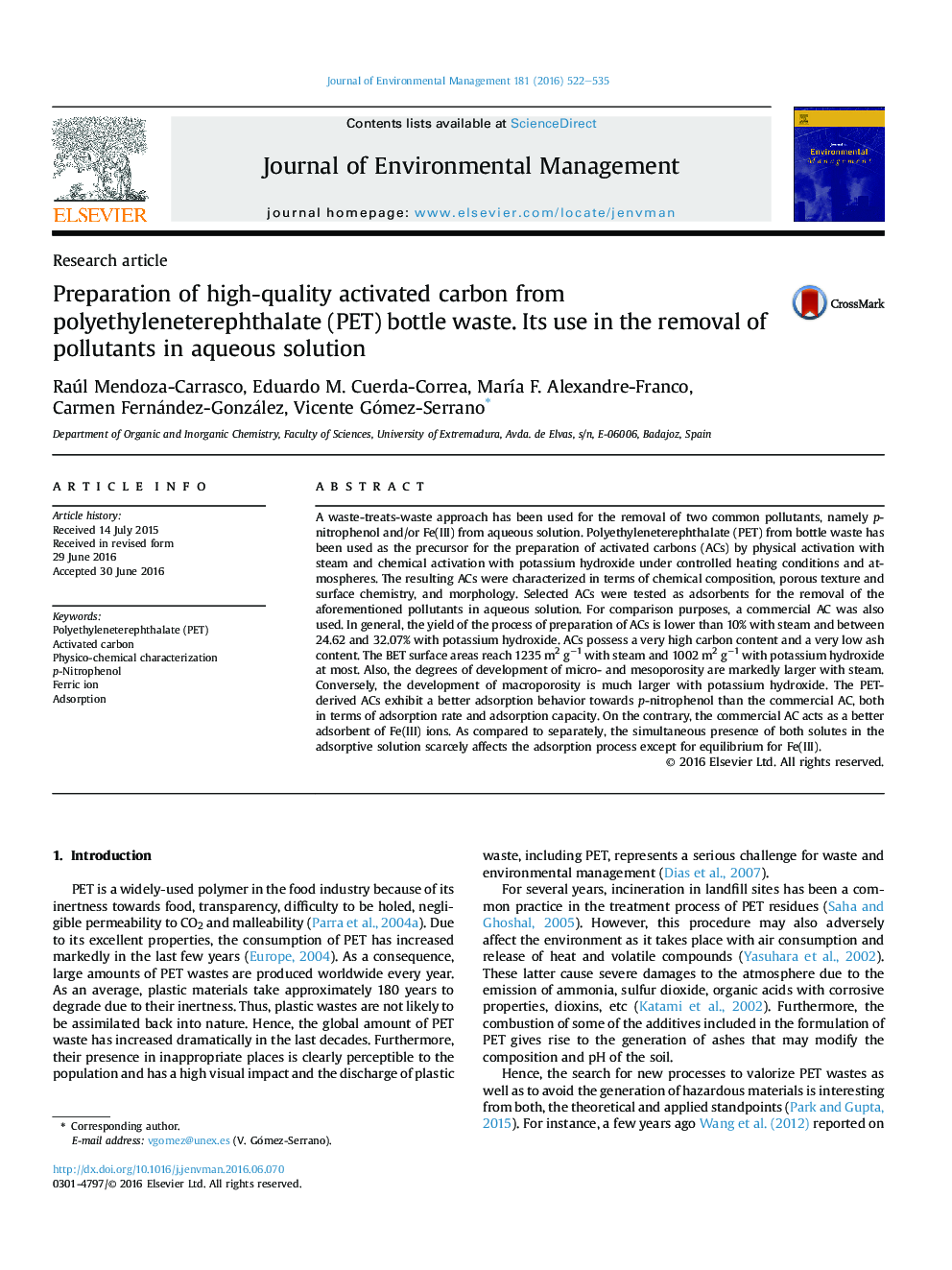| Article ID | Journal | Published Year | Pages | File Type |
|---|---|---|---|---|
| 7479745 | Journal of Environmental Management | 2016 | 14 Pages |
Abstract
A waste-treats-waste approach has been used for the removal of two common pollutants, namely p-nitrophenol and/or Fe(III) from aqueous solution. Polyethyleneterephthalate (PET) from bottle waste has been used as the precursor for the preparation of activated carbons (ACs) by physical activation with steam and chemical activation with potassium hydroxide under controlled heating conditions and atmospheres. The resulting ACs were characterized in terms of chemical composition, porous texture and surface chemistry, and morphology. Selected ACs were tested as adsorbents for the removal of the aforementioned pollutants in aqueous solution. For comparison purposes, a commercial AC was also used. In general, the yield of the process of preparation of ACs is lower than 10% with steam and between 24.62 and 32.07% with potassium hydroxide. ACs possess a very high carbon content and a very low ash content. The BET surface areas reach 1235Â m2Â gâ1 with steam and 1002Â m2Â gâ1 with potassium hydroxide at most. Also, the degrees of development of micro- and mesoporosity are markedly larger with steam. Conversely, the development of macroporosity is much larger with potassium hydroxide. The PET-derived ACs exhibit a better adsorption behavior towards p-nitrophenol than the commercial AC, both in terms of adsorption rate and adsorption capacity. On the contrary, the commercial AC acts as a better adsorbent of Fe(III) ions. As compared to separately, the simultaneous presence of both solutes in the adsorptive solution scarcely affects the adsorption process except for equilibrium for Fe(III).
Related Topics
Physical Sciences and Engineering
Energy
Renewable Energy, Sustainability and the Environment
Authors
Raúl Mendoza-Carrasco, Eduardo M. Cuerda-Correa, MarÃa F. Alexandre-Franco, Carmen Fernández-González, Vicente Gómez-Serrano,
